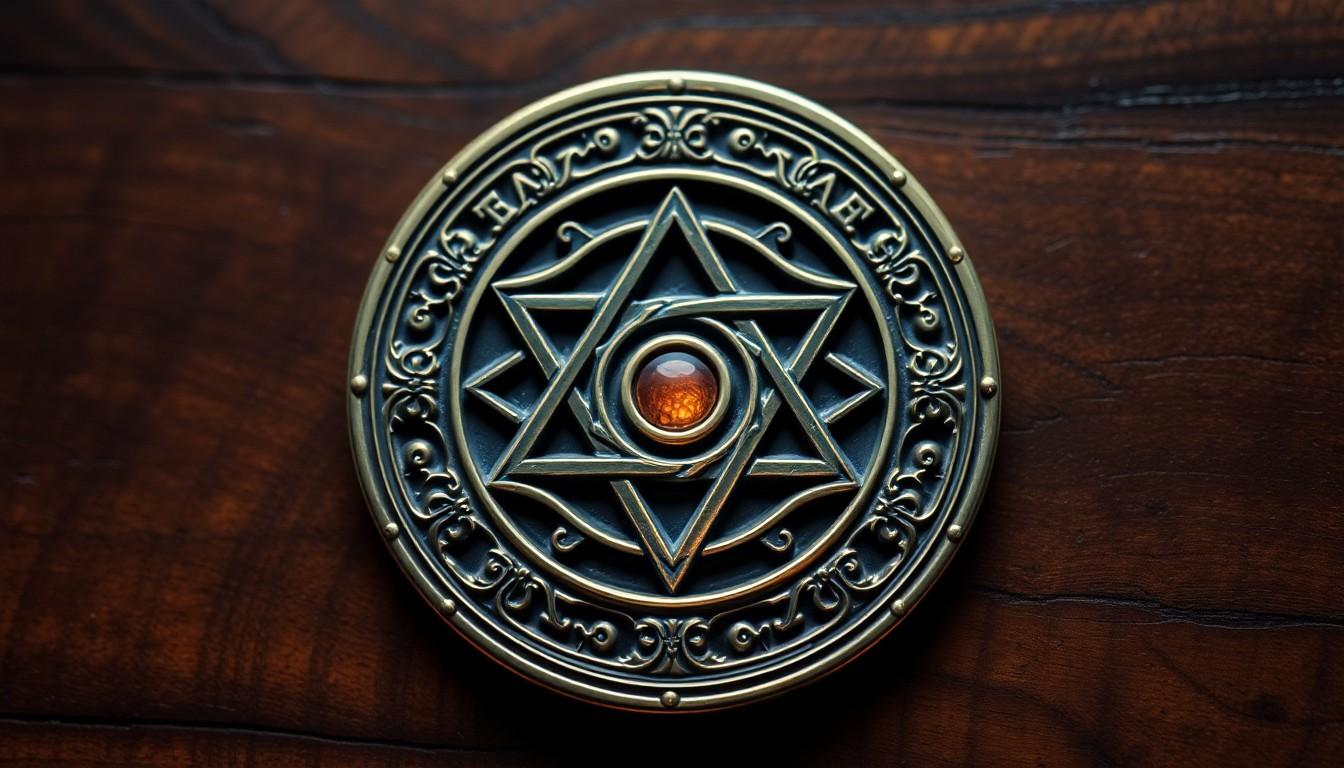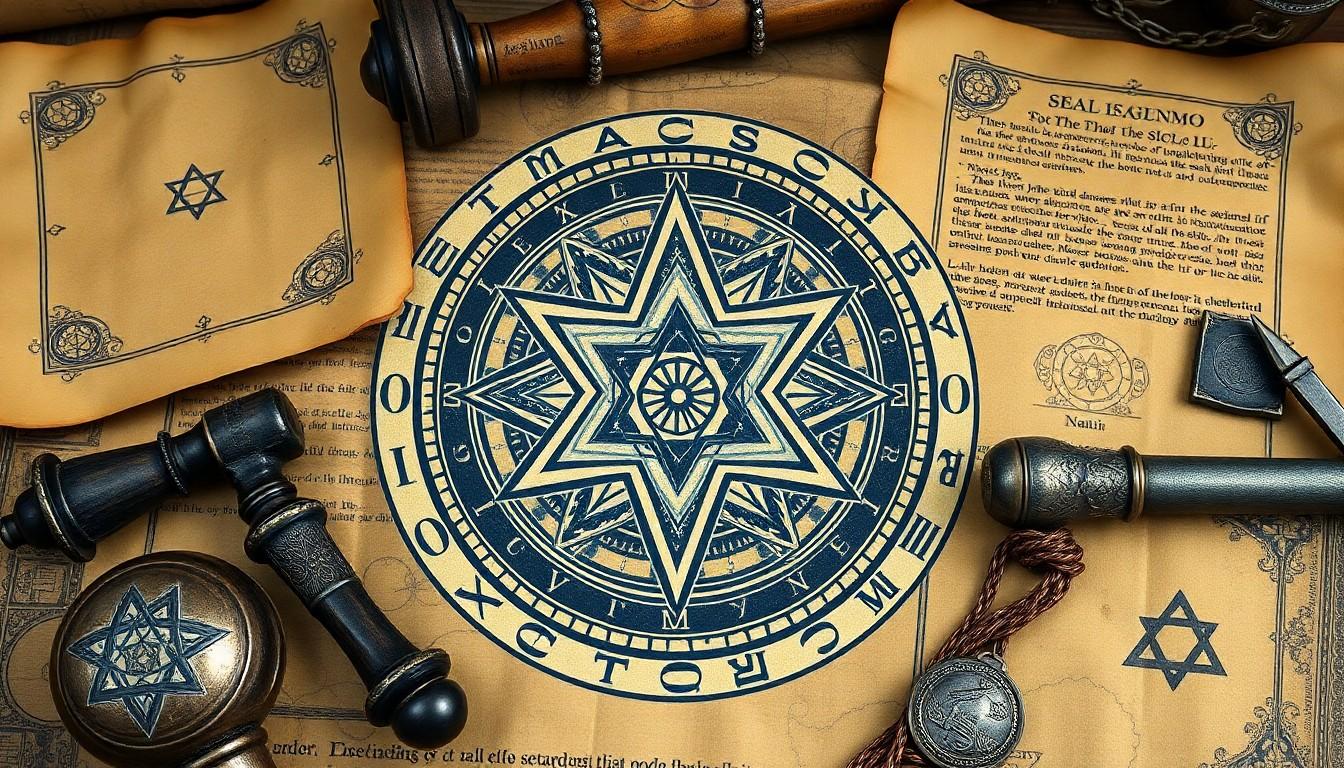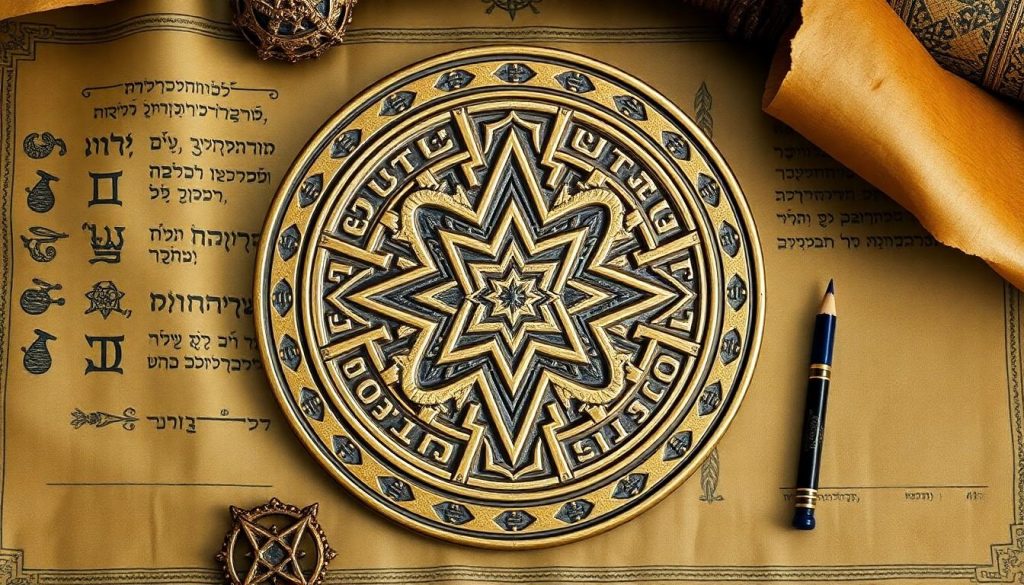The Seal of Solomon is one of history’s most enigmatic and potent symbols, deeply rooted in ancient mysticism and religious traditions. This sacred emblem, also known as the Star of David or Hexagram, has captivated scholars, spiritual seekers, and mystics for centuries with its perfect geometric harmony and alleged supernatural properties.
Throughout time, this mystical seal has transcended its origins in Jewish and Islamic traditions to become a universal symbol of divine protection and spiritual wisdom. Legend says that King Solomon possessed a magical ring bearing this seal, which granted him extraordinary powers, including the ability to command spirits and communicate with animals. Today, the symbol continues to appear in various forms across different cultures and spiritual practices while maintaining its reputation as a potent talisman for protection and divine connection.
Understanding the Seal of Solomon’s Origins
The Seal of Solomon emerged from medieval Jewish Islamic mystical traditions as a powerful symbol of divine authority. Ancient texts describe it as a magical signet ring bestowed upon King Solomon, granting him supernatural abilities.
Ancient Hebrew and Islamic References
Hebrew texts depict the seal as a divine ring inscribed with sacred names, enabling Solomon to command supernatural entities. The Babylonian Talmud’s Tractate Gittin describes Solomon using a brass-and-iron ring engraved with sacred symbols to control benevolent spirits and demons. Islamic traditions expand on these accounts, documenting the seal’s power over jinn through sacred inscriptions in ancient Arabic scripts.
Historical Significance in Religious Texts
Religious manuscripts across traditions document the seal’s prominence in spiritual practices:
| Text Source | Description of the Seal | Historical Period |
|---|---|---|
| Babylonian Talmud | Ring with divine name for demon control | 3rd-5th century CE |
| Islamic Chronicles | Brass-iron ring for commanding jinn | Medieval Period |
The seal appears in multiple sacred texts as:
- A symbol of divine authority granted to King Solomon
- A tool for commanding supernatural beings, including demons, jinn
- A sacred emblem containing mystical inscriptions
- A mark of spiritual wisdom and protection
The symbol transcends its origins in Jewish mysticism, which emerged as a potent emblem of spiritual power in Islamic Christian medieval manuscripts. Religious scholars documented its use in rituals, ceremonies, and mystical practices across various traditions, demonstrating its enduring significance in religious history.
Symbolism and Design Elements

The Seal of Solomon embodies profound spiritual symbolism through its intricate geometric design elements. Each component carries specific mystical significance, reflecting ancient wisdom and divine properties.
The Six-Pointed Star Pattern
The six-pointed star forms the foundational structure of the Seal of Solomon, representing the harmony between opposing forces. This geometric pattern consists of two interlocked triangles:
- The upward-pointing triangle symbolizes the connection to celestial realms
- The downward-pointing triangle represents the earthly manifestation
- The six points signify the six directions of space: north, south, east, west, above, below
- The hexagonal center creates perfect symmetry, embodying divine balance
Sacred Inscriptions and Markings
Sacred inscriptions enhance the seal’s mystical properties through specific elements:
- Hebrew letters inscribed along the border convey divine names
- Angelic sigils placed within the triangles amplify spiritual power
- Traditional markings include:
- Names of angels
- Sacred geometric patterns
- Mystical formulas
- The arrangement of symbols follows precise sacred geometry principles
- Ancient texts describe specific placement rules for maximum efficacy
Powers and Mystical Properties

The Seal of Solomon embodies powerful mystical properties through its distinctive hexagrammic or pentagrammic design. This ancient symbol carries specific supernatural abilities attributed to its legendary origins.
Protection Against Evil Forces
The seal demonstrates protective qualities through its dual-material construction of brass and iron. These metals serve distinct purposes in commanding supernatural entities:
- Brass components seal written commands to benevolent spirits
- Iron elements control evil forces and demons
- The combined materials create a balanced protective barrier against negative energies
- Direct communication with animals, enabling dialogue across species
- Command over supernatural entities, including angels and demons
- Authority to direct spirits for constructive purposes, exemplified by the building of Jerusalem’s Temple
- Divine empowerment through direct bestowal from God, enhancing Solomon’s natural wisdom
| Material | Purpose | Entities Controlled |
|---|---|---|
| Brass | Good Commands | Angels & Benevolent Spirits |
| Iron | Evil Commands | Demons & Malevolent Forces |
Cultural Impact Through History

The Seal of Solomon’s influence extends across multiple religious traditions spanning centuries. Its cultural significance has evolved through Jewish mysticism, Islamic traditions, and Western occult practices.
Use in Magic and Occult Practices
The Seal of Solomon holds a central position in medieval Jewish esoteric practices. In Islamic mysticism, the seal known as “Khātam Sulaymān” features prominently in magical traditions, including:
- Talismans were created for protection against evil forces
- Ritual objects inscribed with the seal’s sacred geometry
- Amulets combining the seal with divine names or verses
- Ceremonial tools marked with the hexagram pattern
Modern Interpretations and Adaptations
Contemporary interpretations of the Seal of Solomon reflect its enduring influence across cultures:
- Integration into modern spiritual healing practices
- Incorporation into decorative art design elements
- Adaptation in New Age Symbolic Interpretations
- Use as a protective symbol in various cultural contexts
| Tradition | Primary Use | Key Features |
|---|---|---|
| Jewish Mysticism | Spiritual Protection | Six-pointed star design |
| Islamic Tradition | Divine Authority | Known as Khātam Sulaymān |
| Western Occultism | Magical Operations | Combined with sacred geometry |
The symbol maintains significance in contemporary spiritual practices while adapting to modern interpretations in art design spirituality.
The Seal in Different Traditions
The Seal of Solomon appears prominently across multiple religious traditions, each offering unique interpretations of its significance and power. Religious texts document their mystical properties through distinct cultural lenses while maintaining core elements of divine authority and supernatural command.
Jewish Mysticism and Kabbalah
Jewish mystical traditions trace the earliest documented references of Solomon’s seal to first-century historian Josephus and the Sefer HaRazim from the third century. The Babylonian Talmud’s Tractate Gittin describes Solomon’s ring as a dual-material instrument: brass components for commanding benevolent spirits and iron elements for controlling demons. Like the Star of David, the hexagram design emerged as a central symbol in medieval Jewish esoteric literature. This mystical emblem represented divine protection through its connection to King Solomon’s legendary powers.
Islamic Traditions and Tales
Islamic mysticism recognizes the seal as “Khātam Sulaymān,” incorporating it into spiritual practices and protective rituals. In Islamic texts, the seal features sacred inscriptions granting power over supernatural beings called jinn. Muslim traditions emphasize the seal’s role in Solomon’s governance, describing it as a divine gift that enhanced his wisdom and authority over natural and supernatural realms. The geometric pattern holds special significance in Islamic art and architecture, representing perfect divine harmony through its symmetrical design.
Conclusion
The Seal of Solomon is one of history’s most enduring and influential mystical symbols. Its remarkable journey from ancient religious traditions to modern spiritual practices demonstrates its timeless appeal and profound significance.
The seal’s power lies in its geometric perfection and its ability to bridge different faiths, cultures, and epochs. Whether viewed as a protective talisman, magical tool, or symbol of divine wisdom, it continues to captivate and inspire seekers of spiritual truth.
Today, this ancient symbol remains deeply relevant, embracing new interpretations while maintaining its essence as a representation of cosmic harmony and divine protection. Its legacy is a testament to humanity’s eternal quest for spiritual connection and understanding.

